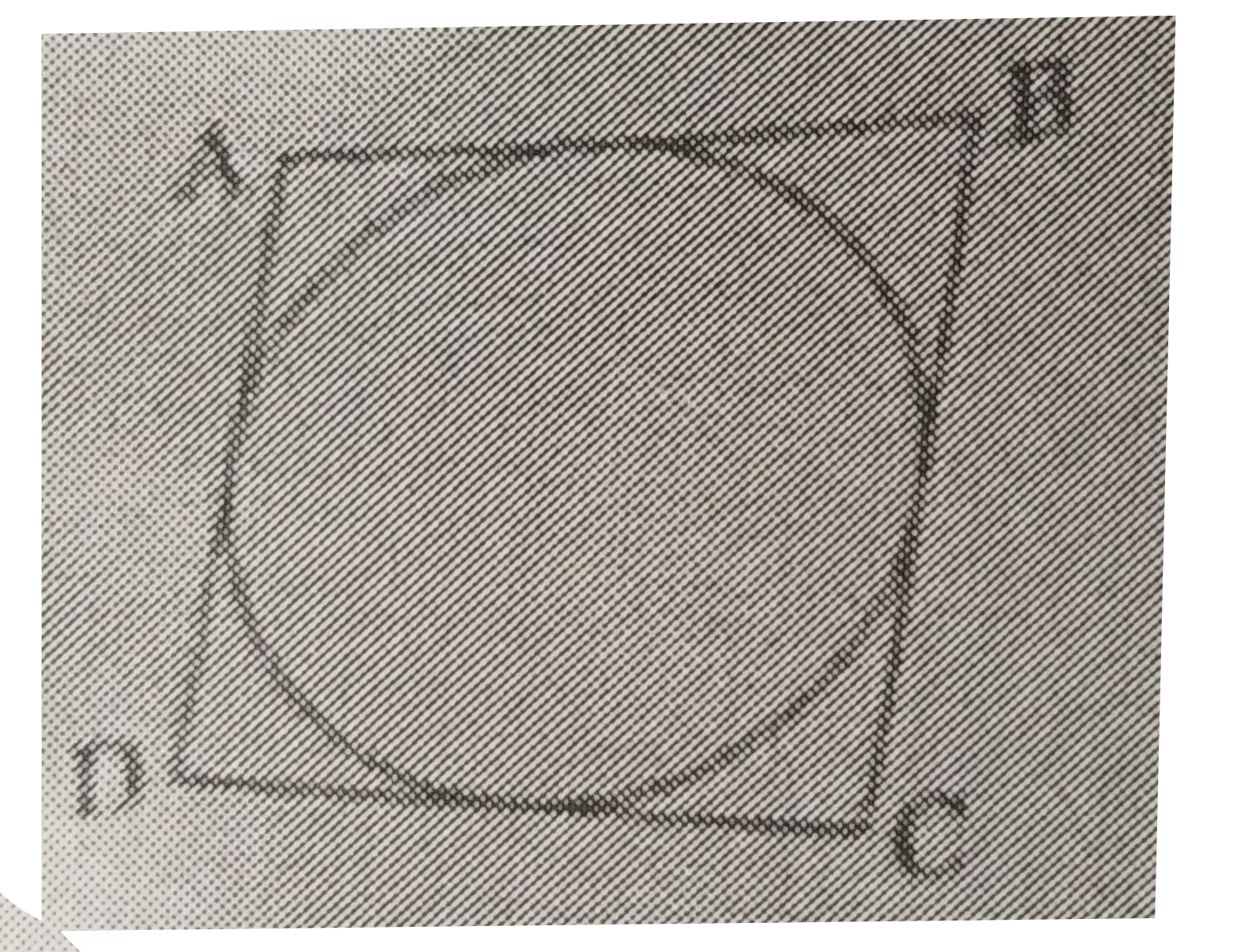A quadrilateral ABCD is drawn to circumscribe a circle. Prove that AB+CD=AD+BC
To prove that in a quadrilateral ABCD that circumscribes a circle, the equation AB+CD=AD+BC holds true, we can follow these steps:
Step 1: Understand the Properties of Tangents
When a circle is inscribed in a quadrilateral, the points where the circle touches the sides of the quadrilateral are important. Let’s denote the points of tangency as follows:
- The circle touches side AB at point P
- The circle touches side BC at point Q
- The circle touches side CD at point R
- The circle touches side DA at point S
Step 2: Establish Equal Tangent Lengths
From the properties of tangents drawn from an external point to a circle, we know that:
- The length of the tangent from point A to point P is equal to the length of the tangent from point A to point S. Thus, we have:
AP=AS
- Similarly, we can establish:
BP=BQ,CR=CQ,DR=DS
Step 3: Write the Relationships
From the above equalities, we can express the sides of the quadrilateral in terms of the tangent lengths:
- For side AB:
AB=AP+BP
- For side CD:
CD=CR+DR
- For side AD:
AD=AS+DS
- For side BC:
BC=BQ+CQ
Step 4: Add the Relationships
Now, we can add the expressions for AB and CD:
AB+CD=(AP+BP)+(CR+DR)
Substituting the values we have:
AB+CD=AP+AS+BP+BQ+CR+CQ+DR+DS
Step 5: Rearranging the Equation
Now, we can rearrange the equation:
AB+CD=(AP+AS)+(BP+BQ)+(CR+CQ)+(DR+DS)
This simplifies to:
AB+CD=AD+BC
Conclusion
Thus, we have shown that:
AB+CD=AD+BC
This completes the proof.
---
When a circle is inscribed in a quadrilateral, the points where the circle touches the sides of the quadrilateral are important. Let’s denote the points of tangency as follows:
- The circle touches side AB at point P
- The circle touches side BC at point Q
- The circle touches side CD at point R
- The circle touches side DA at point S
From the properties of tangents drawn from an external point to a circle, we know that:
- The length of the tangent from point A to point P is equal to the length of the tangent from point A to point S. Thus, we have:
AP=AS
- Similarly, we can establish:
BP=BQ,CR=CQ,DR=DS
From the above equalities, we can express the sides of the quadrilateral in terms of the tangent lengths:
- For side AB:
AB=AP+BP
- For side CD:
CD=CR+DR
- For side AD:
AD=AS+DS
- For side BC:
BC=BQ+CQ
Now, we can add the expressions for AB and CD:
AB+CD=(AP+BP)+(CR+DR)
Substituting the values we have:
AB+CD=AP+AS+BP+BQ+CR+CQ+DR+DS
Now, we can rearrange the equation:
AB+CD=(AP+AS)+(BP+BQ)+(CR+CQ)+(DR+DS)
This simplifies to:
AB+CD=AD+BC
Thus, we have shown that:
AB+CD=AD+BC
This completes the proof.
Topper's Solved these Questions
- BOOK - NCERT ENGLISHCHAPTER - CIRCLESEXERCISE - Exercise 10.12videos
CIRCLES
- BOOK - NCERT ENGLISHCHAPTER - CIRCLESEXERCISE - SOLVED EXAMPLES3videos
CIRCLES
- BOOK - NCERT ENGLISHCHAPTER - ARITHMETIC PROGRESSIONSEXERCISE - All Questions65videos
ARITHMETIC PROGRESSIONS
- BOOK - NCERT ENGLISHCHAPTER - CONSTRUCTIONSEXERCISE - EXERCISE 11.27videos
CONSTRUCTIONS
Similar Questions
In Figure, a quadrilateral ABCD is drawn to circumscribe a circle .
Prove that
AB+CD=BC+AD
 View Solution
View SolutionIn Figure, a quadrilateral ABCD is drawn to circumscribe a circle .
Prove that
AB+CD=BC+AD
 View Solution
View SolutionA quadrilateral ABCD is drawn to circumscribe a circle. Prove that AB+CD=AD+BC.
or
A circle touches all the four sides of a quadrilateral ABCD. Prove that AB+CD=BC+DA.View SolutionIn Figure, a quadrilateral ABCD is drawn to circumscribe a circle such that its sides AB, BC, CD and AD touch the circle at P, Q, R and S respectively. If AB=x cm , BC=7cm , CR=3cm and AS=5cm , then x= (a) 10 (b) 9 (c) 8 (d) 7
View SolutionIn Figure, diagonal AC of a quadrilateral ABCD bisects the angles A and C . Prove that AB=AD and CB=CD.
View SolutionIn the figure, diagonal AC of a quadrilateral ABCD bisects the angles A and C . Prove that AB=AD and CB=CD
View SolutionThe diagonals of quadrilateral ABCD intersect at O . Prove that ar(ACB)ar(ACD)=BODO
View SolutionThe diagonals of quadrilateral ABCD, AC and BD intersect in O. Prove that if BO=OD, the triangles ABC and ADC are equal in area.
View SolutionIn Figure, diagonal AC of a quadrilateral ABCD bisects the angles A and C . Prove that AB=AD and CB=CD
View SolutionIn a quadrilateral ABCD , given that ∠A+∠D=90o . Prove that AC2+BD2=AD2+BC2 .
View Solution

